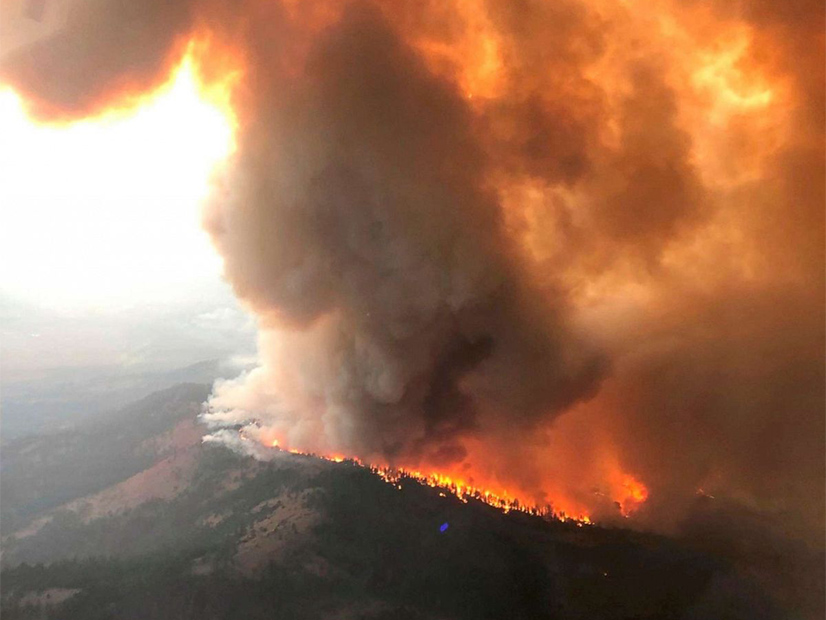The two California state entities that oversee investor-owned utility wildfire prevention programs need to exercise their authority more effectively to limit ignitions and public safety power shutoffs, the State Auditor said in a report published Thursday.
The California Public Utilities Commission and the recently formed Office of Energy Infrastructure Safety have fallen short in both regards, Acting State Auditor Michael Tilden said in his report to the state Legislature and Gov. Gavin Newsom.
The CPUC and Energy Safety Office share oversight of the wildfire prevention activities and performance of the state’s IOUs, including Pacific Gas and Electric, Southern California Edison and San Diego Gas & Electric.
The Energy Safety Office accepted utility wildfire mitigation plans despite serious deficiencies and did not ensure proposed improvements were in high-fire threat areas, Tilden wrote.
“The office approved plans despite some utilities’ failure to demonstrate that they are appropriately prioritizing their mitigation activities, and subsequent reviews have found that some utilities failed to focus their efforts in high fire-threat areas,” he said.
The CPUC, which audits utilities to determine if they comply with safety rules, “did not audit all utility service territories on a consistent basis, did not audit several areas that include high fire-threat areas, and has not used its authority to penalize utilities when its audits uncover violations,” he said.
Six of the state’s 20 most catastrophic fires since 2015 were started by utility equipment, Tilden noted. To prevent ignition, IOUs initiated 67 shutoffs from 2013 to 2021, affecting 3.6 million customers, he said.
Utilities have been making improvements, including undergrounding power lines and replacing bare wires with covered conductor, but they have hardened only about 1,500 miles of the estimated 40,000 miles of bare lines in high-threat fire areas, Tilden noted.
“As a result, the state must prioritize the areas utilities need to address first,” he wrote.
Among his recommendations is bolstering a state law that took effect in January requiring utilities to identify line sections that are regularly de-energized to prevent ignitions during dry windy conditions.
“The state could strengthen this law by requiring utilities to identify what is necessary to prevent future power shutoffs if the conditions leading to those shutoffs were to occur again, and to address a type of power outage caused by altering equipment settings [to trigger fast shutoffs] that led to more than 600 unplanned power outages in 2021,” he said.
The CPUC said in a statement that it is “committed to the continuous improvement of its operations. Accordingly, the CPUC will establish a plan and timelines toward implementing the recommendations identified in the California State Auditor’s report.”
Its detailed responses to the audit, along with the responses of the Energy Safety Office, are included with the report.
The commission agreed, for example, that it needs to take a more risk-based approach to its utility audits but disagreed partly with a recommendation for penalizing underperforming utilities.
The Energy Safety Office defended its record, saying the complex process of promoting a safer grid would take time, but agreed that utilities need to “move faster and be smarter” in their fire prevention efforts.
“Utilities will not get ahead of their wildfire risk until they reimagine how they build, operate, and manage their infrastructure,” Director Caroline Thomas Jacobs wrote.
“Energy Safety is committed to driving timely, meaningful and effective changes to the way California’s electrical corporations build, operate and maintain their infrastructure,” she said. “Energy Safety will continue to challenge them, question them and demand continuous improvements to safety.”

